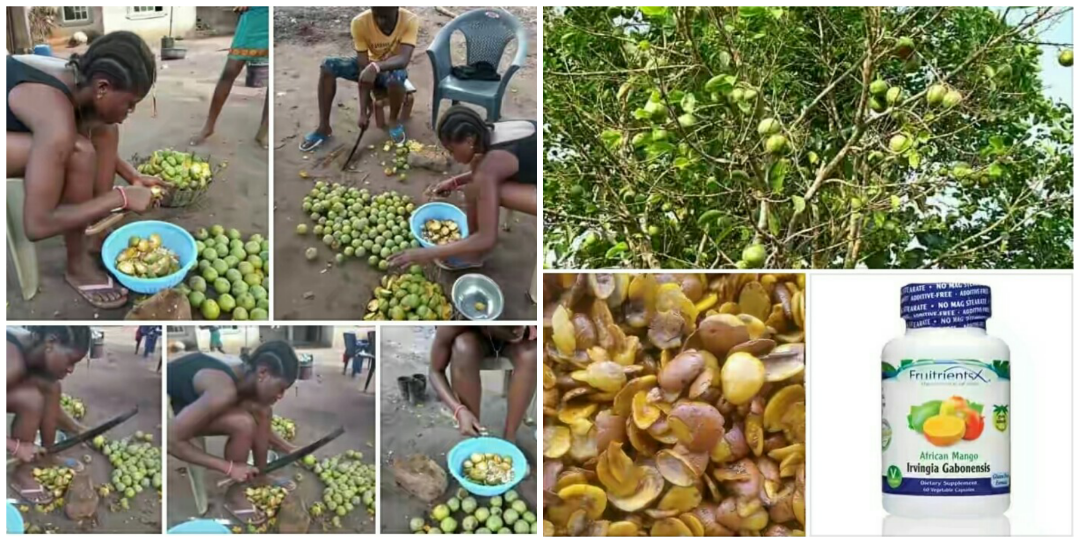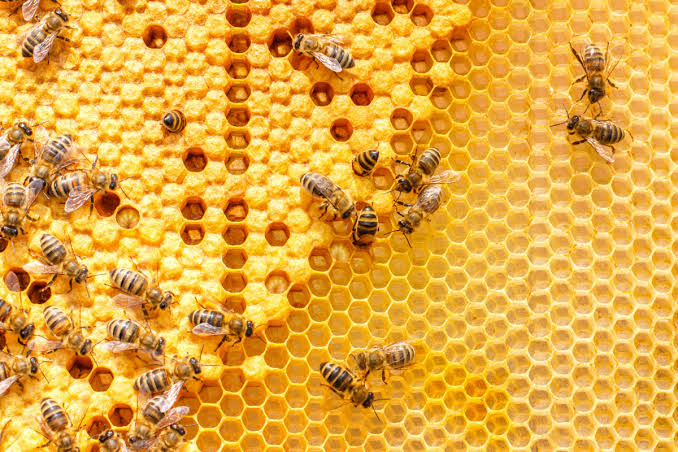Fever Nut (Caesalpinia bonduc): Description, Health Benefits, Medicinal Uses, Side Effects.
Caesalpinia bonduc; synonyms: Guillandina bonduc, Caesalpinia crista, Guilandina crista, Caesalpinia grisebachiana, Guilandina bonducella, Guilandina gemina (Botanical/scientific name) or Bunduc, Bonduc nut, Fever nut, Guilandina seed, Nicker nut, Yellow nicker (English) or Ƴa ƴa dara (Hausa): A tropical and subtropical climber with widespread medicinal uses
DESCRIPTION AND OCCURRENCE:
Fever nut is a coarse climbing vine (5-15m long) to a prickly shrub. The compound leaf is bipinnate, i.e., resembles a feather, with 12-24 leaflets (2-4 cm long) arranged on side branches on a main leaf branch. The entire compound leaf is up to 1 m long.
The plant is armed with hooked prickles. Flowers in a cluster (up to 50 cm long) yellow with reddish streaks. Flowers are of one sex only. The fruit pods (6-9 cm long) armed with numerous rigid spines. The fruit splits open when ripe to reveal 1-2 seeds which are oval, smooth and grey.
Seed coat is hard, glossy and greenish to ash grey in color and is traversed by circular and vertical faint markings of the cracks, forming uniform rectangular to squarish rectulations all over the surface. Seed is exalbuminous.
The kernel surface is furrowed and ridged, hard, pale yellowish, white circular to oval, flattened and about 1.23 – 1.75 cm in diameter. Taste is bitter and odor is nauseating and unpleasant. Caesalpinia bonduc is pantropical.

It is commonly found in coastal areas of tropical Africa. Occurs in East Tropical Africa: Tanzania; Northeast Tropical Africa: Ethiopia; South Tropical Africa: Angola and Mozambique; Southern Africa: Cape Province, Natal; West Tropical Africa: Benin, Guinea-Bissau, Liberia and Nigeria; West-Central Tropical Africa: Equatorial Guinea and Zaire; Western Indian Ocean: Comoros, Madagascar and Seychelles; Asia-Temperate; Arabian Peninsula: Oman; China, Guangdong, Hong Kong, Eastern Asia, Nansei-Shoto, Taiwan, Western Asia, Iraq Asia-Tropical, Indian Subcontinent, Bihar, Himachal Pradesh, Karnataka, Maharashtra, Orissa, Pakistan, Punjab, Sikkim, Sri Lanka, Tamil Nadu, Uttar Pradesh, Indo-China, Burma, Thailand, Vietnam, Malesia, Borneo, Christmas I, Java, Lesser Sunda Is s.l., Moluccas, Papua New Guinea, Peninsular Malaysia, Philippines, Sarawak, Sumatera Australasia, Australia, Lord Howe I, Norfolk I Northern America, and Northern Mexico.
Other countries or regions you can find nicker nut are are Sinaloa, Tamaulipas, Northwestern U.S.A., Idaho Pacific, North-Central Pacific, Hawaii, Northwestern Pacific, Caroline Island, Guam, South-Central Pacific, Cook Island, Marquesas, Southwestern Pacific, American Samoa, Fiji, New Caledonia, South Solomons, Tonga, Vanuatu, Western Samoa Southern America, Brazil, Bahia, Para, Caribbean, Bahamas, Dominica, Dominican Republic, Guadeloupe, Jamaica, Martinique, Puerto Rico, Trinidad-Tobago, Mesoamerica, Costa Rica, Panama, Northern South America, Guyana, Western South America, Colombia, Ecuador, Galapagos and Peru.
USES/IMPORTANCE
The oil from fever nut seeds is used for cooking and is rich in linoleic acid (68%) and has vesicant properties. The oil is used to treat rheumatism.
Throughout the distribution area of Caesalpinia bonduc in Africa its leaves, bark and roots are used to cure fever, headache and chest pain and as an anthelminthic. The leaves are an ingredient of a famous cough formula.
In West Africa, it is used as a rubefacient and as a tonic in the treatment of jaundice, diarrhoea and skin eruptions. At the Kenyan coast the seed and decoctions of the leaves and roots are taken to treat asthma and complications during menstruation, to avoid miscarriage, and as eye-drops to treat internal blood clots in the eye.
Several inhabitants of Tanzania dry out the seeds’ kernel and pulverize it into a powdered form, which is taken internally along with water for curing diabetes mellitus.
On the other hand, people in Somalia use the oil extracted from the seeds for treating rheumatism. In Somalia, the oil from the seeds is used to treat rheumatism.
A bitter extract from the seeds is known as ‘poor man’s quinine’ and is used against malaria e.g. in India, but its use in Africa as a malaria cure has not been documented. In tropical Asia and the Pacific Ocean islands, Caesalpinia bonduc is an important medicinal plant as well, with largely similar uses as in Africa. In large doses it is believed to be poisonous.
In the Philippines, the seeds are used to soothe stomach disorders and as a mild purgative. Administered in powder form they are considered a febrifuge and tonic. In Thailand, the leaves are considered carminative, and are used in the treatment of abnormal urination. The leaves are also an ingredient of a famous cough formula.
In Indonesia, the leaves or pounded seeds of fever nut are employed as an anthelmintic. Young leaves are used in intermittent fevers, and for expelling intestinal worms in Malaysia. Fresh fruit powder with garlic and mixed with lukewarm water is rubbed on the body to mitigate fever in Philippines.
In Papua New Guinea, a decoction of the leaves is prescribed as an antidepressant for mentally disturbed persons. In large doses the plant is believed to be poisonous.
In Fiji, the young leaves are also employed as an anthelmintic for children. A decoction of the leaves is used to treat sinusitis, and of the roots for fatigue. In India, the leaves and bark are considered emmenagogue, febrifuge and anthelmintic.
The seed has a reputation as a tonic and antipyretic. In Sierra Leone and Ethiopia Caesalpinia bonduc is planted as a live fence. In Equatorial Guinea the oil from the seeds is used for cooking.
It is useful in countering fever, malarial fever, and intermittent fever. Paste made from the leaves and twigs is useful in reducing toothache. Boiled leaves of fever nut are used for gargling to relieve sore throat. Its juice is efficient in easing Elephantiasis.
Leaves and seeds, after roasting with castor oil, are applied externally to inflammatory swellings, especially to inflamed piles, hydrocele, and orchitis.
Cake made of 30 grains of powdered kernels, fried in ghee taken twice a day is a valuable remedy in cases of acute orchitis, ovaritis and scrofula.
Children who are unable to digest mother’s milk are given the extract of the kernel or its powder along with ginger, salt and honey to get good stomachic effect.
The seeds are widely used as beads, as weights and as counters in board games. Often the seeds of Caesalpinia bonduc are seen washed up in several beaches across the world. These seeds are collected by people in various places for making necklaces. In India, children often use the seeds of this tree as marbles.
In India, for the management of skin ulcers, Caesalpinia Bonduc is boiled in 150 ml of water for 5 minutes and then a paste is made out of it, which is then applied on the ulcers. This can be done once a day to reduce the symptoms.
Chemical analysis of the Caesalpinia bonduc seeds have revealed that they possess anti-bacterial, anti-fungal, febrifuge, anti-viral, tonic, stomachic, gently purgative, hypoglycaemic and hypocholesterolemic properties. In fact, it has been found that these seeds also possess anti-cancer properties.
AYURVEDIC HEALTH BENEFITS OF FEVER NUT
DIABETES: Crack a Caesalpinia Bonduc seed. Extract the kernel. Soak the Bonduc nut at night. Eat it in the morning. Drink the water also. Repeat for 15 days. Get your blood sugar checked.
ASCITES: Prepare decoction of Caesalpinia Bonduc flower. Have a glass when needed.
SKIN ULCERS: Take Caesalpinia Bonduc Root bark. Grind. Add water to make paste. Apply over ulcers.
SCROFULA: Dry Caesalpinia Bonduc Kernel. Grind. Fry in clarified butter. Apply it over affected area.
ABSCESS: Grind Caesalpinia Bonduc kernel. Add water to make paste. Apply it over affected part. Do it twice a day.
ASTHMA: Roast Caesalpinia Bonduc kernel. Prepare decoction with roasted kernel. Have half a cup once a day.
LIVER DISEASES: Powder Caesalpinia Bonduc seeds. Have 2 pinches with a glass of goat milk.
PARALYSIS: Extract or purchase Caesalpinia Bonduc seed oil. Massage with this lukewarm oil for 10 minutes at night.
LEPROSY: Crush Caesalpinia Bonduc seeds. Add water to make paste. Apply it over affected area daily. It cures the problem.
SKIN DISEASES: Dry Caesalpinia Bonduc seeds. Crush them. Add any carrier oil. Apply it over affected area twice a day.
STYPTIC: Make a paste of ground Caesalpinia Bonduc seeds by adding water. Apply it over affected area. It prevents the styptic.
PURGATIVE: Grind dried Caesalpinia Bonduc seeds. Have 2 pinches with water. It is a good purgative.
CONSTIPATION: Fry leaves of Caesalpinia Bonduc in clarified butter. Consume 3 g of it thrice a day.
DIARRHEA: Take quarter tsp seed powder of Caesalpinia Bonduc with a cup of lukewarm Milk. Have it twice a day.
JOINT PAIN: Use Caesalpinia Bonduc seed oil for massage over painful joints.
INFLAMMATION: Bandage leaves of Caesalpinia Bonduc over inflamed areas.
FEVER: Take 100 g Caesalpinia Bonduc seeds with 15 g Aconitum Heterophyllum seeds. Powder them. Take quarter teaspoon of the powder with same quantity of Sugar. Have it twice a day. If fever is due to malaria then try this remedy: Take roasted seeds of Caesalpinia Bonduc with same quantity of long pepper. Grind them to make powder. Take quarter teaspoon of it with one teaspoon honey. Have it twice a day.
MALARIA: Mix seed powder of both Caesalpinia Bonduc and black pepper in 2:1 ratio. Take 4 g twice a day.
ORCHITIS: Take dry Caesalpinia Bonduc seeds. Grind them. Add castor oil to make paste. Apply it over affected area and cover. Do it once a day.
HYDROCELE: Grind Caesalpinia Bonduc seeds. Mix castor oil to make a thick paste. Apply it over affected part. Do it regularly.
MALARIA: Take equal quantity of Caesalpinia Bonduc seeds and black pepper. Grind them together. Have 2 pinches with water once a day.
EXPECTORANT: Grind Caesalpinia Bonduc seeds and long pepper in equal quantity. Take 1/4 teaspoon with honey in morning for 3 days.
GUM DISEASES: Take 2 gm each of Caesalpinia Bonduc seeds, areca nuts and alum. Burn them. Crush them. Add little water and apply it over affected area.
FEVER: Take Caesalpinia Bonduc kernel and black pepper in equal amount. Grind them together. (Dosage: 5 gram by adults or 2 gm by children)
PROSTATE ENLARGEMENT: Take half teaspoon each of Tribulus terrestris (Tsida, Tsidau in Hausa), Caesalpinia bonducella, Areca catechu, Asparagus recemosus, Crataeva nurvala and Agate gemstone. Take them daily after meals for three months.
OR buy capsules containing all the above herbs. Take 1 tablet 2 times a day, daily after meals. OR buy Mother – Tincture from a Homeopathic Shop of the above herbs. Start with 3 drops of each herb, if it suits then increase the dosage accordingly.
PRECAUTIONS: Do not use more than prescribed dose. Taking more medication will not improve your symptoms; rather they may cause poisoning or serious side-effects. Caesalpinia bonduc should be used with caution for using this herb in large doses may prove to be toxic.
FOR FURTHER READING, SEE:
1. Burkill, H.M., 1995. The useful plants of West Tropical Africa. 2nd Edition. Volume 3, Families J–L. Royal Botanic Gardens, Kew, Richmond, United Kingdom. 857 pp.
2. Datte, J.Y., Traore, A., Offoumou, A.M. & Ziegler, A., 1998. Effects of leaf extract of Caesalpinia bonduc (Caesalpiniaceae) on the contractile activity of uterine smooth muscle of pregnant rats. Journal of Ethnopharmacology 60(2): 149–155.
3. du Puy, D.J., Labat, J.N., Rabevohitra, R., Villiers, J.-F., Bosser, J. & Moat, J., 2002. The Leguminosae of Madagascar. Royal Botanic Gardens, Kew, Richmond, United Kingdom. 750 pp.
4. Moshi, M.J. & Nagpa, V., 2000. Effect of Caesalpina bonducella seeds on blood glucose in rabbits. Pharmaceutical Biology 38(2): 81-86.
5. Sharma, S.R., Dwivedi, S.K. & Swarup, D., 1997. Hypoglycaemic, antihyperglycaemic and hypolipidemic activities of Caesalpinia bonducella seeds in rats. Journal of Ethnopharmacology 58(1): 39-44.
6. Stiles, D., 1998. The Mikea hunter-gatherers of southwest Madagascar: ecology and socioeconomics. African Study Monographs 19(3): 127-148.
These are the thoughts and intellectual property of:
Sa’eed Halilu Bawa
Senior Lecturer (Associate Professor) at University of the West Indies, St. Augustine Campus, Trinidad.
Studied Food and Nutrition Sciences, Dietetics at Kaduna Polytechnic, Nigeria; Warsaw University of Life Sciences, Poland.
























